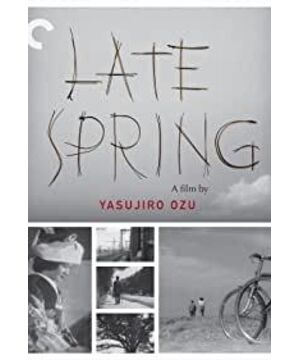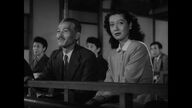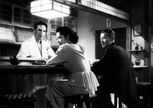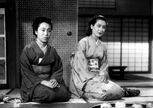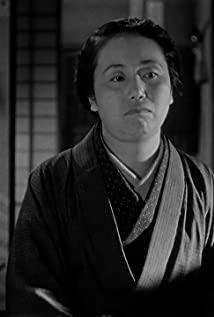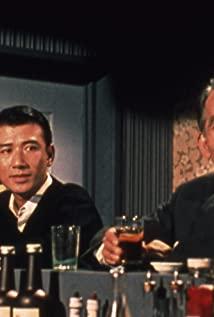This "Late Spring" has already had many comments, and I just want to talk about some details here.
The first thing that is easy to notice, and has been mentioned by many people, is his fixed camera position. When indoors, the camera is usually very low, as if the audience is a bystander sitting on a tatami. The character often walks out of the camera and then back again, the camera doesn't move or switch after the character. At the same time, the camera always maintains a certain distance from the character, placing the character in a "scene". An obvious example is when the father and daughter sat down to eat for the first time, and the father tested his daughter's attitude towards his students. From the time the daughter came back, the father and daughter had a dialogue, and the two sat down face to face, the camera did not move, so much so. The father's back covered his daughter's face. At this time, my psychological expectation was that the camera would at least catch up with the dining table, but within a few seconds, the conversation between the two had already begun, and the camera had not moved.
The most direct result of this is to make the audience aware of their existence - the camera is not omniscient, the audience is not omnipresent, and sometimes you will feel that the director deliberately maintains a certain distance from the character, plus consistent The upside-down perspective suggests respect for the characters, not wanting to infringe on the characters' space, not judging the characters to make their own decisions, and at the same time strengthening the audience's sense of powerlessness - we are just spectators trapped in the seats.
Some small scenes are quite memorable. For example, at the beginning of the movie, the father and daughter make a train from Kamakura to Tokyo. The scenery along the train changes from the countryside to the city; the living room, dining room and father's bedroom at home is a traditional Japanese pattern. , while upstairs in the center of the daughter's room, there were two chairs and a Western-style coffee table; when the aunt asked her to "sit down" and asked about the marriage, the niece stood up uneasy, and then sat down on one of the chairs. But let the niece "sit down" again - maybe for her, sitting on the tatami is "sit down"?
I don't know if there is a different way of saying these two kinds of "sitting" in Japanese, the English subtitles I watched didn't make a distinction. It reminds me of whether I can understand the movie more than the European audience in the cinema? The relationship between the characters, the tone of speech, and the body language require a deep understanding of eastern culture, so that they will not feel abrupt. The daughter's dependence on her father's nostalgia, and the father's lesson to her daughter, seems to belong to the past tense even in Eastern culture. In Ang Lee's "Diet Men and Women", the eldest daughter is reluctant to marry in order to take care of her father, but this kind of commitment is an oppression to her, which is a modern interpretation.
The first time I watched a film by Hara Setsuko was Mikio Naruse's "Fan" (1951). In "Late Spring", Setsuko Hara seemed more mature than two years later. In fact, in "Late Spring", there is very little description of my daughter's psychological activities. At first, I saw that she was not only calm but also very happy with her situation. During the play, there were ten minutes of silence—it was said to be silent, but there was actually a background sound of the performance on the stage. Although I had absolutely no idea what I was singing, I felt it was very suitable for my daughter’s complicated feelings at this time.
"Late Spring" (1949)
http://taohuawu.net/2010/01/31/late-spring-1949/
View more about Late Spring reviews


